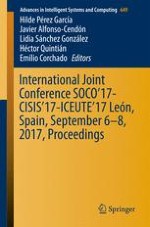2018 | OriginalPaper | Chapter
An Artificial Neural Network Model for the Prediction of Bruxism by Means of Occlusal Variables
Authors : Ángel Álvarez-Arenal, Héctor deLlanos-Lanchares, Elena Martin-Fernandez, Carlos González-Gutiérrez, Mario Mauvezin-Quevedo, Francisco Javier de Cos Juez
Published in: International Joint Conference SOCO’17-CISIS’17-ICEUTE’17 León, Spain, September 6–8, 2017, Proceeding
Publisher: Springer International Publishing
Activate our intelligent search to find suitable subject content or patents.
Select sections of text to find matching patents with Artificial Intelligence. powered by
Select sections of text to find additional relevant content using AI-assisted search. powered by
